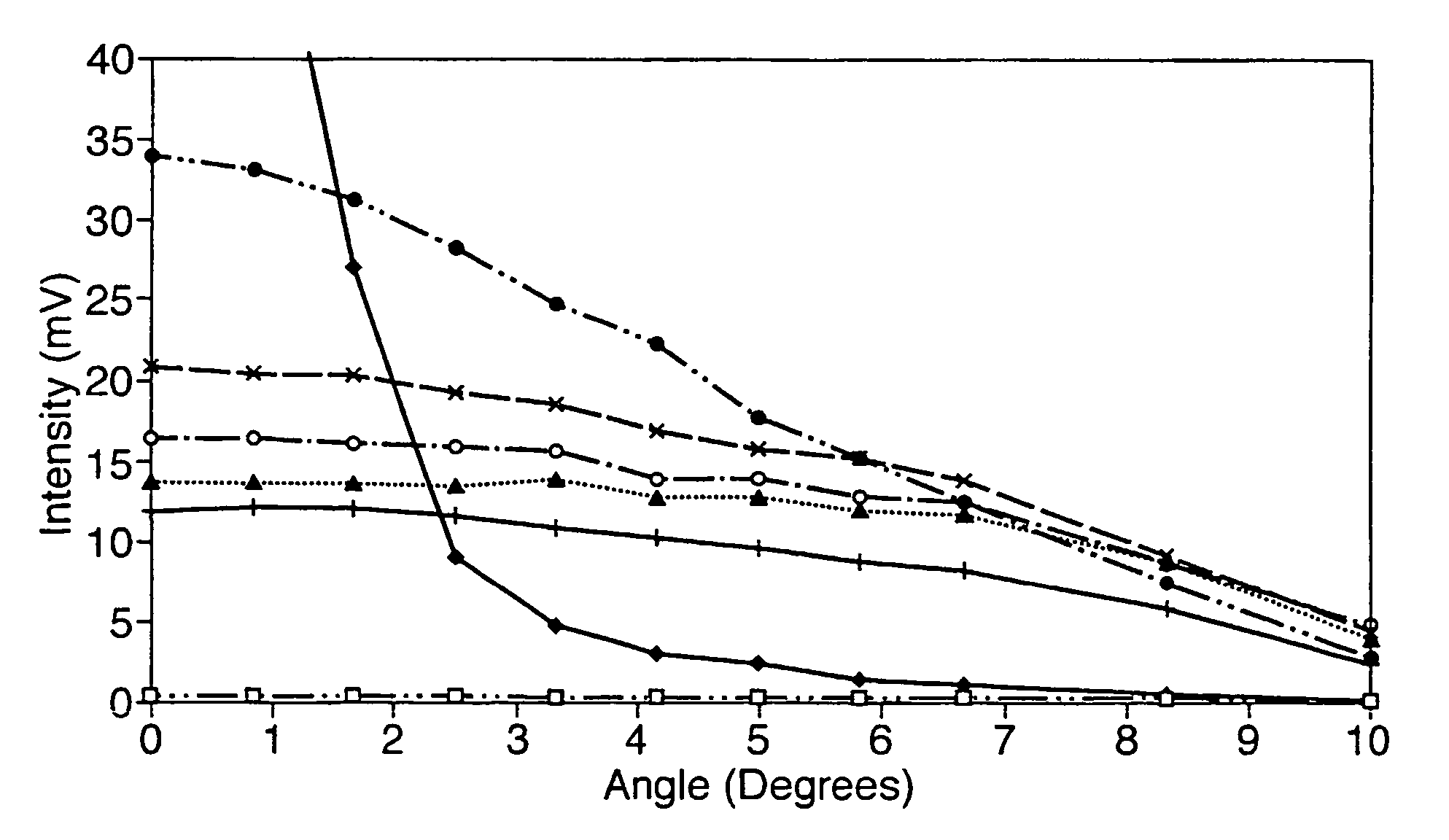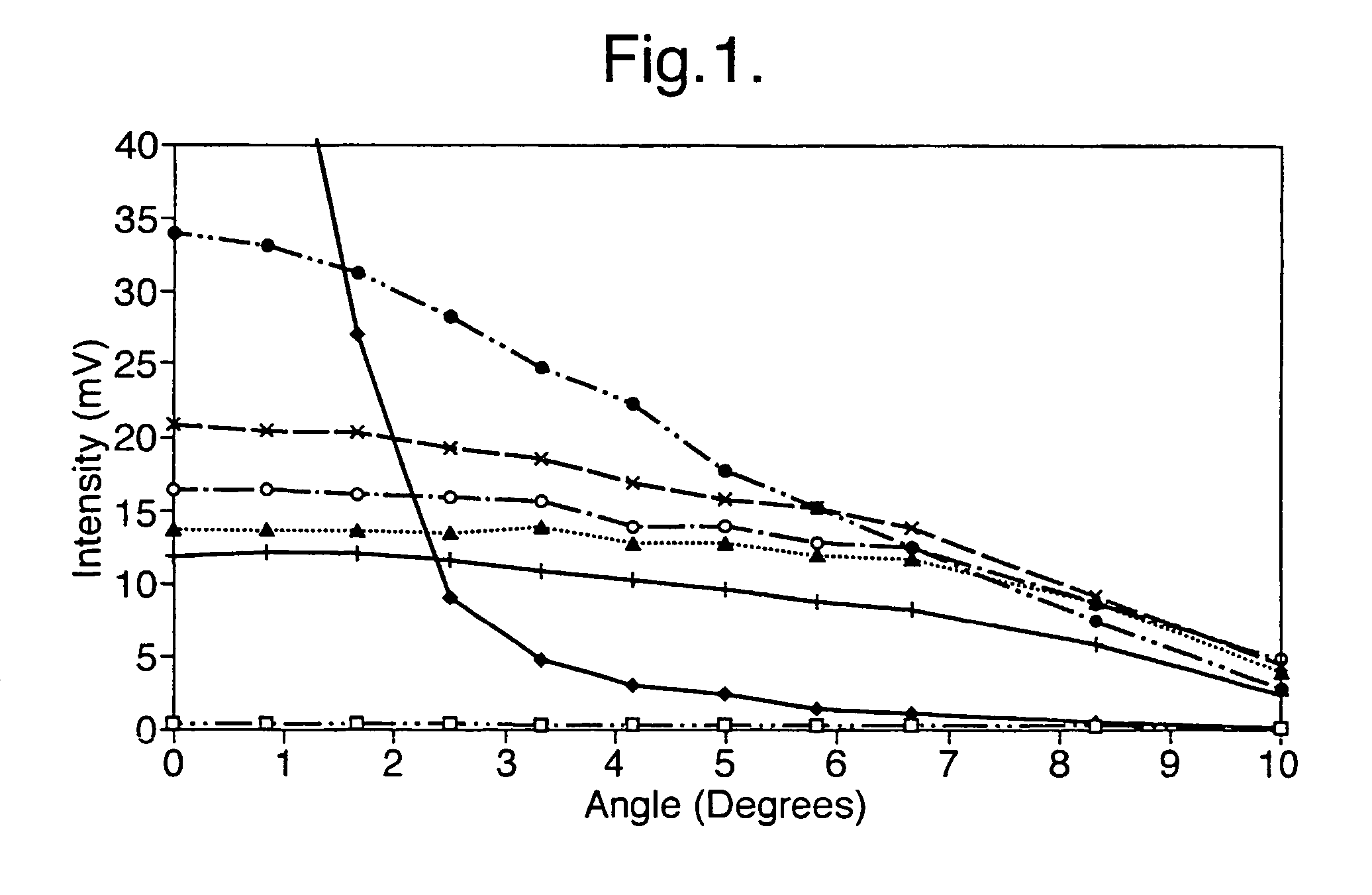Inkjet receiver media
a receiver media and inkjet technology, applied in the direction of printing, duplicating/marking methods, coatings, etc., can solve the problems of increasing the demands on the receiver media, affecting the quality of the printed image, and affecting the printing quality, so as to reduce the rate of ink absorption and reduce the light scatter
- Summary
- Abstract
- Description
- Claims
- Application Information
AI Technical Summary
Benefits of technology
Problems solved by technology
Method used
Image
Examples
example 2
[0057]All the above sheets showed some degree of curl towards the receiver surface. A coating of Surcol 441 in acetone (15% solution) was applied to the rear side of the receiver media of Example 1 and dried to give a coat weight of 4 g / sq m. This had the effect of removing the curl.
[0058]Surcol 441 is an acrylic copolymer with an acid value of 120 (mg KOH per g polymer) manufactured by CIBA.
example 3
[0059]The same composition of coating as described in Example 1 was applied under similar conditions to a 160 gsm Mellotex Brilliant White (Mellotex is a Trade Mark) paper ex Tullis Russell.
[0060]After drying, the receiver media were cut into sheets and printed as described in Example 1. The resultant prints were found to dry rapidly, and showed a very attractive satin finish. The colours were bright and the images were sharp, except in areas of high ink loading, where some wicking was observed, following the paper fibres. Gloss measurements were as follows:
[0061]
Angle (Degrees)256085Measured Gloss (%)4.514.825.7
example 4
[0062]The same composition of coating as described in Example 1 was applied under similar conditions to a 160 gsm Advocate Bright White (Advocate is a Trade Mark) paper ex Tullis Russell.
[0063]After drying, the receiver media were cut into sheets and printed as described in Example 1. The resultant prints were found to dry rapidly, and showed a very attractive satin finish. The colours were bright and the images were sharp, except in areas of high ink loading, where some wicking was observed, following the paper fibres.
[0064]
Angle (Degrees)256085Measured Gloss (%)4.412.819.8
[0065]Examples 1, 2, 3 and 4 show that a suitable satin finish can be obtained by coating onto a range of papers. However, the final control of high ink loadings is variable. The paper used in the first example has a matt coating that obscures the structure of the paper fibres and therefore gives better control.
PUM
| Property | Measurement | Unit |
|---|---|---|
| incident angle | aaaaa | aaaaa |
| mean particle diameter | aaaaa | aaaaa |
| mean particle diameter | aaaaa | aaaaa |
Abstract
Description
Claims
Application Information
 Login to View More
Login to View More - R&D
- Intellectual Property
- Life Sciences
- Materials
- Tech Scout
- Unparalleled Data Quality
- Higher Quality Content
- 60% Fewer Hallucinations
Browse by: Latest US Patents, China's latest patents, Technical Efficacy Thesaurus, Application Domain, Technology Topic, Popular Technical Reports.
© 2025 PatSnap. All rights reserved.Legal|Privacy policy|Modern Slavery Act Transparency Statement|Sitemap|About US| Contact US: help@patsnap.com


